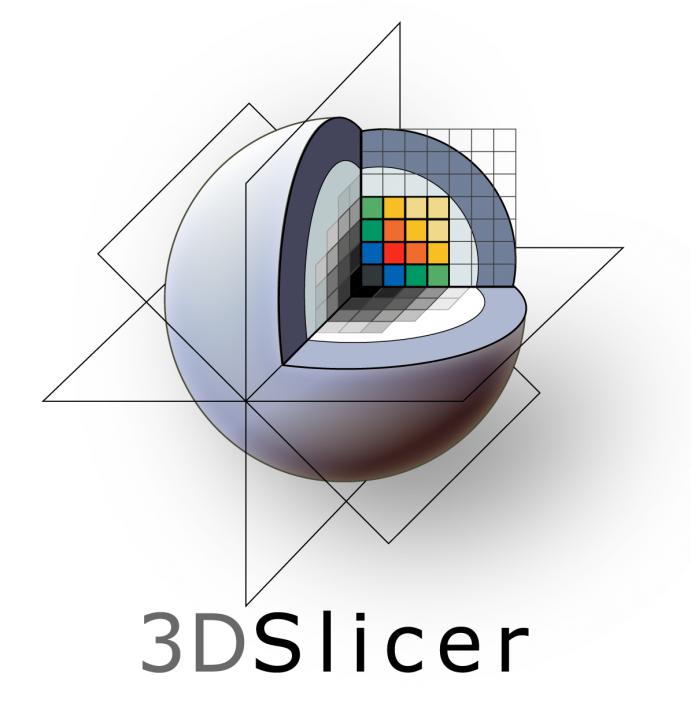Collaboration Furthers Interoperability of 3D Slicer

3D Slicer is an extensible open-source software platform for medical image computing and visualization that also has applications in other domains. In November, we announced the release of 3D Slicer 4.5, which includes over 60 extensions and 150 feature improvements. 3D Slicer is a highly collaborative project. This is the first in a series of posts that will highlight collaborative developments.
 Interoperable communication of quantitative image analysis results using DICOM standard and 3D Slicer
Interoperable communication of quantitative image analysis results using DICOM standard and 3D Slicer
The accurate and unambiguous communication of derived image-related information is of critical importance for emerging quantitative imaging applications. Actively researched areas in quantitative imaging include segmentation of normal organs and pathology, spatial registration across time-points and modalities, and measurement performance. Digital Imaging and Communication in Medicine (DICOM)—first released in 1993—is the standard used ubiquitously in commercial medical devices that are employed in such domains as clinical radiology, dentistry, cardiology, and nuclear medicine imaging systems. DICOM can be used not only to communicate images but also to interchange the results of analysis. The Quantitative Image Informatics for Cancer Research (QIICR) project aims to develop an open-source imaging informatics infrastructure to support interoperable communication of quantitative image analysis results using DICOM. Working toward this goal, the QIICR team recently added support for DICOM image segmentation objects to 3D Slicer. At the annual convention of the Radiological Society of North America (RSNA), which took place earlier this month in Chicago, an unofficial “connectathon” was held to demonstrate the interoperability of communicating image segmentation results among several academic (3D Slicer, ePAD, and AIM on ClearCanvas) and commercial (Brainlab and Siemens syngo.via) platforms. Brainlab AG develops medical technology for image-guided surgery, radiation oncology, and medical image exchange. It is headquartered in Munich, Germany.
The ability to interchange segmentation results using DICOM may help enable quantitative imaging research in cancer care and a number of other clinical research areas. With this ability, researchers can compare the analysis results produced by different tools, which facilitates secondary analysis and comparison of the longitudinal results produced by different workstations. The use of DICOM can also consistently archive the processing results that are harmonized with the imaging data so that they can be queried in a reliable manner.
Successful interchange of #DICOM segmentation results between #3DSlicer and #Brainlab at #RSNA2015! #NCIITCR pic.twitter.com/dEYvJzKhVH
— QIICR (@itcr_qiicr) December 1, 2015
Support of standards-based interchange of segmentation results, as covered in detail in a recent manuscript published by the group in PeerJ PrePrints, is just one of many projects underway at QIICR. On-going and future work includes the use of DICOM Structured Reporting for communicating measurement results, support of enhanced multiframe and parametric map image storage, development of user-level interfaces for these capabilities in 3D Slicer, and development of the application programming interface (API) in the DICOM Toolkit (DCMTK) for developer-level access. Additional work regards various tools and sample datasets to facilitate learning and adopting DICOM. The QIICR project is funded by the National Cancer Institute, Informatics Technology for Cancer Research (ITCR) program, award U24 CA180918.
Related links
- http://slicer.org
- http://qiicr.org
- http://slicer.org/pages/Slicer_Community
- http://www.kitware.com/news/home/browse/592
- http://dcmtk.org
- Fedorov A, Clunie D, Ulrich E, Bauer C, Wahle A, Brown B, Onken M, Riesmeier J, Pieper S, Kikinis R, Buatti J, Beichel RR.(2015) DICOM for quantitative imaging biomarker development: A standards based approach to sharing of clinical data and structured PET/CT analysis results in head and neck cancer research. PeerJ PrePrints 3:e1921 https://doi.org/10.7287/peerj.preprints.1541v1
As an update, here’s a QIICR blog post highlighting a video demonstration of 3DSlicer – Brainlab interoperability: http://qiicr.org/outreach/Slicer-Brainlab/